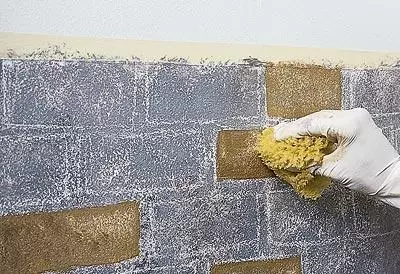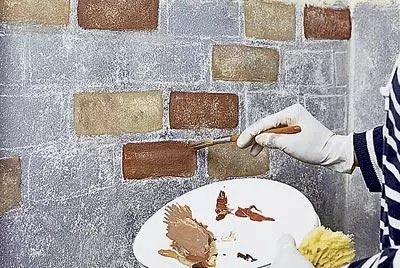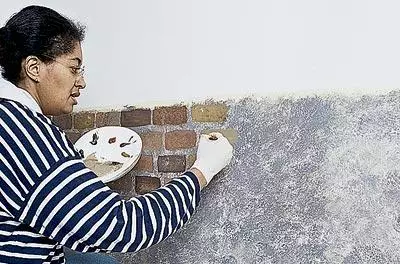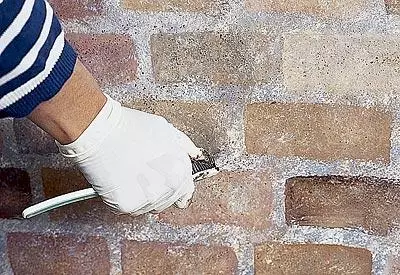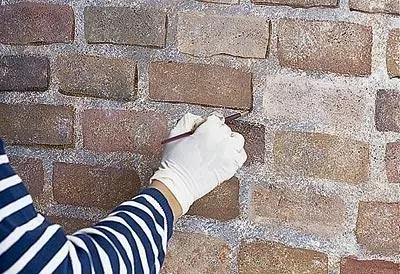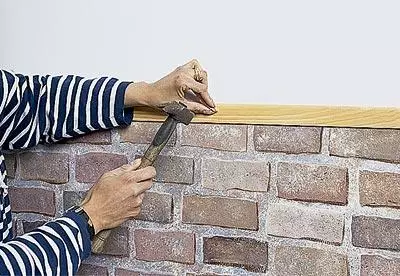To simulate brickwork, it is not necessary to use facing tiles, just paint the walls with acrylic paints.
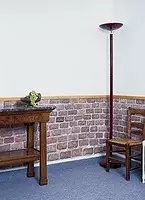
Only approaching this wall closely, you can see that it is unreal. To create it, you need quite a bit ...
Work techniques
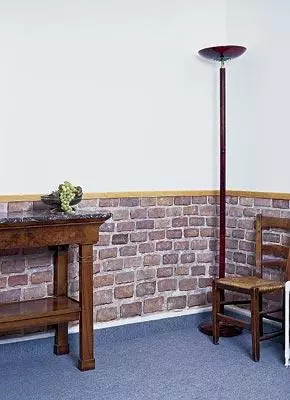
First, apply a layer with a layer of white semi-wave acrylic paint on the wall, and the top-layer of the background, which reproduces the color of the cement mortar, which will remain between the "bricks". The background paint is applied using a large sponge dipped in paint and pressed (tampony). It is not necessary to strive to evenly cover the entire surface - just a few times walk in different places to create shades.
It is necessary to warn that it is necessary to calculate the "building material" so that the wall consists of the whole "bricks". This is important for small wall surfaces, for example next to the window. Between "bricks" should remain a gap of 10-12mm. Note that it is always easier to reduce it than to increase the already drawn.
Necessary materials
You will need a bucket, two brushes (N4.20), old toothbrush, six cardboard plates as a palette, chalk, work gloves, two natural sponges (medium and small), clean rag, protective adhesive tape and about ten tubes (jars) Polymer Acrylic Emulsion: Titanium Belil, Gas, Red and Bright, Syna, Siena Natural and Logging, Umbra, Mars Brown. Belil is better to purchase with a margin. The specified amount of paint will be enough to draw 50m "brick wall".When the background paint dries, make the contours of "bricks", starting from the bottom row. The intervals between the elements should not coincide vertically. Ensure that the ranks are smooth horizontally and not "wound up". It is not necessary to use a ruler, paint your hand: the wall will look much more likely. If it seems to you that the edge of some row is too raised or omitted, you can add or remove a bit of "solution", thereby compensating for the level difference in relation to the bottom row.
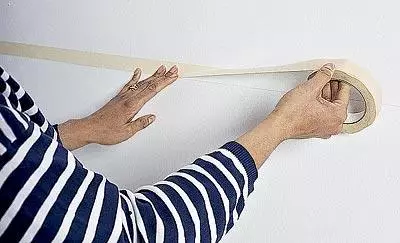
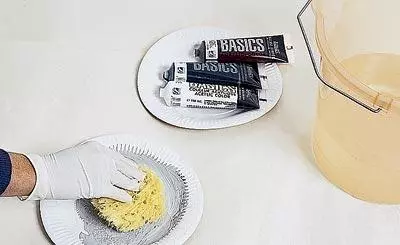
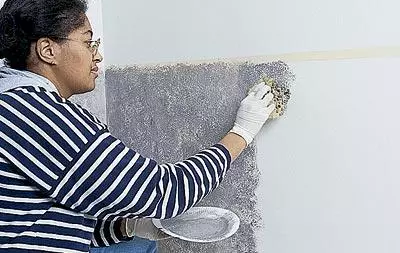
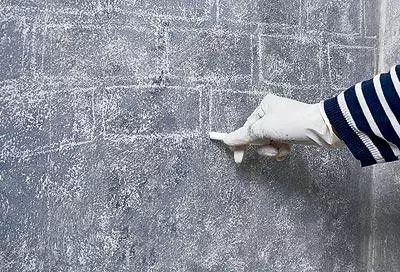
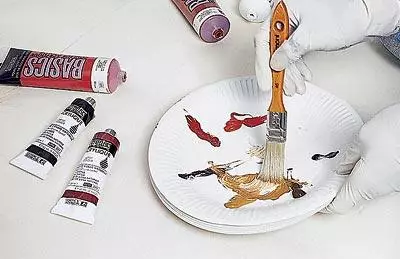
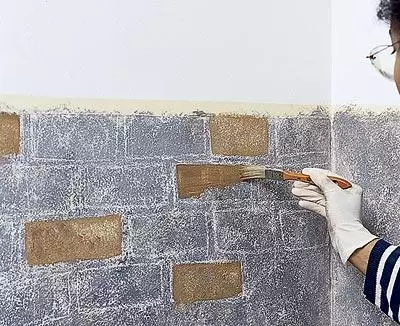
To get a brick color background, mix natural Siena, Ohru Red and Ohru lightly, adding a little bleel. A wide brush is filled with several "bricks" on each wall in random order and immediately blot with a sponge. For a number of other "bricks" (also taken in an arbitrary order) to the specified mixture of colors, add some water and brown Mars. The third shade will be able to add Belil and burned Siena. The principle of paint is the same in all three cases.
When all the "bricks" are painted, on the surface of the wall by the method of tampony, apply a mixture from diluted with water whiten and a small amount of ocher. After that, do the old toothbrush in the "Luggage bone" paint and spray to reproduce the brick texture.
Good to know
The advantages of acrylic paint are that it does not spread, but covers the surface with a smooth layer and dries very quickly.It should also be remembered that unwanted spots and lines that accidentally formed during operation are easily removed by water. When selecting colors, do not misunderstand that acrylic paint darkens when drying.
The drawn wall will look natural, if you make "bricks" relief. This is the purpose of a thin tassel on the right and bottom to circle each "brick" paint obtained as a result of mixing with black Umbra and Belil. Relief allocations should be directed on each wall in one direction, depending on where the light drops from the window. If reliefs are dramatically stand out, you can smooth out this effect, which is growing up with a toothbrush, slightly moistened in a very liquid solution leaving with natural blue.
Such work (in the room on the room B30M2) newcomer can be performed in 12-16 hours. Above the "brick wall" will look good with a wax (lacquer) of a plank from a tree or (what to do a little more difficult) a number of grinding "stones".
